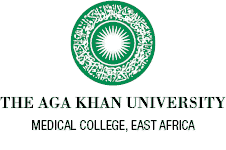Minimal Invasive Surgery
Minimal access surgery (MAS) or invasive surgery is undertaken with one or more small incisions instead of a large incision. The surgeon passes a telescope with a video camera through a small incision usually in the belly button into a body cavity. The surgeon then views the surgery on a TV monitor.
Surgical instruments are then passed through one or more other similar little incisions. The surgeon examines and operates on the area in question by viewing magnified images on a television. When the telescope is used to operate on the abdomen, the procedure is called laparoscopy.
The advantages of minimal access surgery include quick recovery and return to normal activities, less need for pain medications, less risk of hernia formation, early mobilization which reduces risk of blood clots, less chance of infection and is cost effective as the hospital stay is reduced.
At AKUH, we undertake most of our operations through keyhole (minimal access) and we are a training centre in this type of surgery. Our residents (post-graduate students) have to achieve a certain minimum level of competence to be allowed to independently practice at the end of their training.
Operations include laparoscopic for ectopic pregnancy, sterilization, removal of ovarian cysts, excision of endometriosis, removal of the womb and prolapse fixing.
Prior to the surgery patients are seen by faculty who discuss the merits and demerits of the various routes of surgery.


